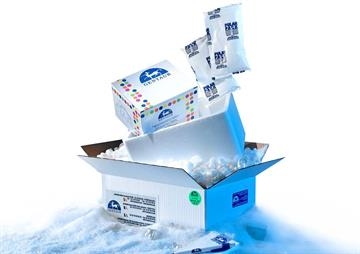MIP-4 Recombinant Protein

MIP-4 Recombinant Protein
785.65 EUR
In Stock
quantity
Produktdetaljer
Katalognummer: 223 - 40-385-001mg
Produktkategori: Företag och industri > Vetenskap och laboratorium
ProSciGentaur
Storlek: 0.01 mg
Related Products
91-334
Kallikrein 4 Recombinant Protein
Kallikreins are a subgroup of serine proteases having diverse physiological functions. Growing evidence suggests that many Kallikreins are implicated in carcinogenesis and some have potential as novel cancer and other disease biomarkers. This gene is one of the fifteen members of the Kallikrein subfamily located in a cluster on chromosome 19. Its encoded protein is secreted and may play a role in suppression of tumorigenesis in breast and prostate cancers. Alternate splicing of this gene results in multiple transcript variants encoding the same protein.
1362.1 €
91-775
Neuroligin 4 Recombinant Protein
Neuroligin 4, X-Linked (NLGN4X) is a single-pass type I membrane protein that belongs to the type-B carboxylesterase/lipase family. NLGN4X is detected at higher levels in heart and at lower levels in the liver, skeletal muscle, and pancreas. NLGN4X is a putative neuronal cell surface protein involved in cell-cell-interactions. NLGN4X may act as splice site-specific ligands for beta -neurexins. It has been shown that NLGN4X is involved in the formation and remodeling of central nervous system synapses. NLGN4X also interacts with discs, large (Drosophila) homolog 4 (DLG4). Defects in NLGN4X have been associated with autism and Asperger syndrome.
1106.95 €
91-879
IL-4 Recombinant Protein
Interleukin-4 (IL-4) is a pleiotropic cytokine that regulates diverse T and B cell responses including cell proliferation, survival and gene expression. IL-4 is produced by mast cells, T cells, and bone marrow stromal cells. IL-4 regulates the differentiation of naive CD4+ T cells into helper Th2 cells, characterized by their cytokine-secretion profile that includes secretion of IL-4, IL-5, IL-6, IL-10, and IL-13, which favor a humoral immune response. Another dominant function of IL-4 is the regulation of immunoglobulin class switching to the IgG1 and IgE isotypes. Excessive IL-4 production by Th2 cells has been associated with elevated IgE production and allergic response.
1059.7 €
40-433-002mg
IL-4 Recombinant Protein
IL-4 is a pleiotropic cytokine that regulates diverse T and B cell responses including cell proliferation, survival and gene expression. Produced by mast cells, T cells and bone marrow stromal cells, IL-4 regulates the differentiation of naive CD4+ T cells into helper Th2 cells, characterized by their cytokine-secretion profile that includes secretion of IL-4, IL-5, IL-6, IL-10, and IL-13, which favor a humoral immune response. Another dominant function of IL-4 is the regulation of immunoglobulin class switching to the IgG1 and IgE isotypes. Excessive IL-4 production by Th2 cells has been associated with elevated IgE production and allergy. Recombinant murine IL-4 is a 13.5 kDa globular protein containing 120 amino acid residues.
785.65 €
40-464-0005mg
IL-4 Recombinant Protein
IL-4 is a pleiotropic cytokine that regulates diverse T and B cell responses including cell proliferation, survival and gene expression. Produced by mast cells, T cells and bone marrow stromal cells, IL-4 regulates the differentiation of naive CD4+ T cells into helper Th2 cells, characterized by their cytokine-secretion profile that includes secretion of IL-4, IL-5, IL-6, IL-10, and IL-13, which favor a humoral immune response. Another dominant function of IL-4 is the regulation of immunoglobulin class switching to the IgG1 and IgE isotypes. Excessive IL-4 production by Th2 cells has been associated with elevated IgE production and allergy. Recombinant rat IL-4 is a 14.0 kDa globular protein containing 126 amino acid residues.
596.65 €
40-464-002mg
IL-4 Recombinant Protein
IL-4 is a pleiotropic cytokine that regulates diverse T and B cell responses including cell proliferation, survival and gene expression. Produced by mast cells, T cells and bone marrow stromal cells, IL-4 regulates the differentiation of naive CD4+ T cells into helper Th2 cells, characterized by their cytokine-secretion profile that includes secretion of IL-4, IL-5, IL-6, IL-10, and IL-13, which favor a humoral immune response. Another dominant function of IL-4 is the regulation of immunoglobulin class switching to the IgG1 and IgE isotypes. Excessive IL-4 production by Th2 cells has been associated with elevated IgE production and allergy. Recombinant rat IL-4 is a 14.0 kDa globular protein containing 126 amino acid residues.









